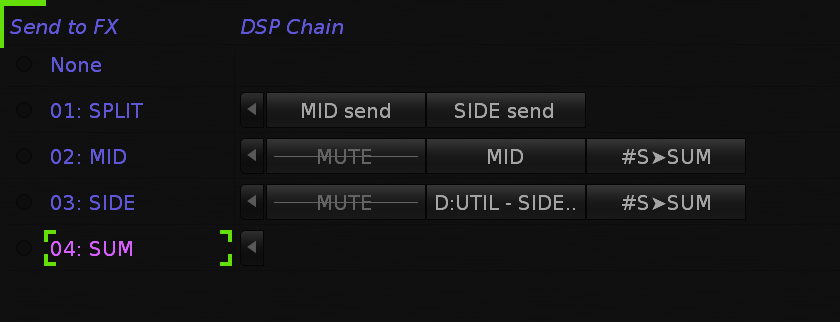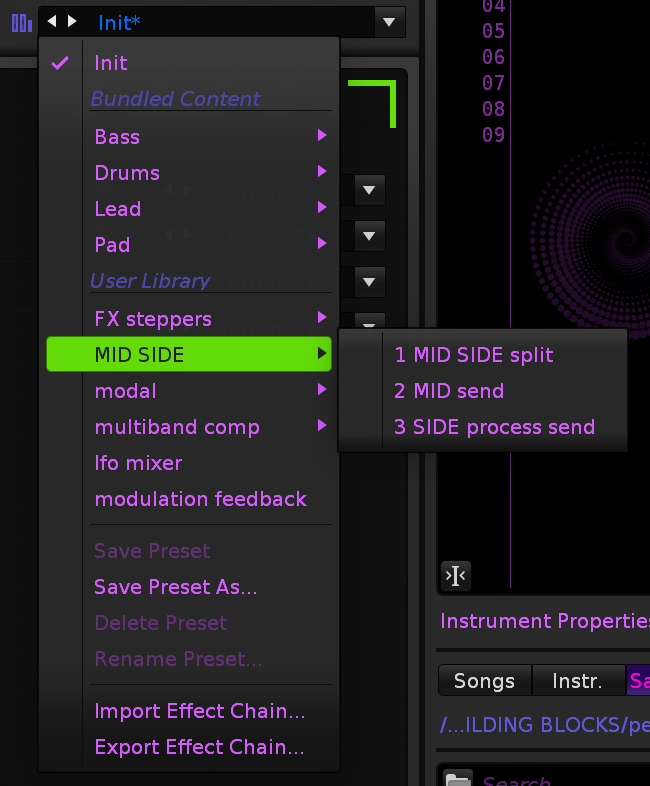Just to make sure I understood correctly: If I get one apple, and then eat it, I actually have no apple?
It is the same logic for Dumbpants ![]()
Was that why you needed two emails to answer mine? (no pun intended)
You won’t not have no apple.
Well, huge thanks to kazakore for pointing out that, while this method does “work”, it is probably not the best way to approach it… and you also risk ruining the phase of your signal if you’re not careful! So, use with caution ![]()
Definitely!
RENOISE!
![]()
![]()
![]()
![]()
![]()
![]()
![]()
![]()
Like Agent Smith and Mr. Anderson/Neo.
edit: Peter Bjorn And John - “Young Folks” catchy tune, thanks.
What about a mid/side splitter container + multiband container + parallel container, or simply one container device for all these various purposes?
this is something that will fulfill our needs&dreams 
~since airwindows has plugins for all platforms linux/mac/win, i find it useful to create templates with ‘monitor’ plugin which has all capabilities of creating so (and much more).
send main source to 3 separate tracks, put monitor plugin, select which channels you want (or among many more algorithms available)
Would this be possible technically in Renoise?
You can do native mid side processing in renoise, but it works better in instrument fx chains than the mixer, bc it’s a bit of a pain setting up the sends. Or at least, I prefer to keep it in instrument fx. Will share later or tomorrow if I get a minute
Eh, for the price point it seems about right. Gotta remember that renoise is a bargain
here’s how it’s done. credit to user @jneen for figuring out the side processing. check the fx chain on instrument 00 in this xrns, and save the fx chains if you want them. You can insert your own processing after the MID device in the MID chain, and/or after the D:UTIL - SIDE device in the SIDE chain. Happy native MID/SIDE processing. Enable the respective MUTE devices if you want to, well, mute part of it to hear wtf you’re doing ![]()
MID SIDE processing.xrns (4.4 KB)

I save the individual chains and call em up when I need them:

I think so, why not? Take a “raw” parallel container device. Each slot then would have mid/side-, gain- and frequency range controls. Maybe the frequency range option then should be activated for all slots at once, and would be the most tricky part here, workflow wise. In the end, I think this is doable, and a single-for-all-container would lower the maintainance overhead for the developers.
The harder part here seem to be the unsolved automation questions. How do you automate a parameter within a slot of that container device? Currently this is only possible via a doofer device in Renoise, but this concept wouldn’t fit anymore here.
^that would be great^
May I ask how does this work? I’m not understanding what exactly is happening in the side part (how it seperates side from mid)
Thanks!
good question. I’ll give it a shot. by inverting the phase of one of the channels and summing both to mono, you’re essentially subtracting, or nullifying (through phase cancelation) the identical information from both channels - which is what the mono signal is. So, all that’s left over is side information. The second gainer inverting the phase of one channel returns it back to stereo info instead of the mono signal the stereo expander device produces
It’s like @slujr said. You can check the MBC14 thread and grab the xrns by @Jek and you’ll see how exactly this is working. It’s pretty clear. Let me try to show the chain which splits the signal:
Send (to side) - Stereo Expander (mono) - Send (to mid) - Gainer (inverse L+R) - Send (to side)
It’s exactly like @slujr has described. First you send the original signal to your side track, which of course is an FX track, and keep the signal. Then you monoize the signal through the Stereo Expander. After that you’re sending the monoized signal to your mid track, which is an FX track, just like your side track, and of course you also keep the signal. Now you’re inverting the phase through the Gainer. Last thing to do is to send the inverted monoized signal to your side track. In your side track the inverted monoized signal is getting subtracted from the original signal, which you have sent right at the beginning, and what’s left is the side signal only. Now you’ve got the side signal in your side track and the mid signal in your mid track.
Personally I never considered to do mid/side processing, too, but thanks to @Jek I think about it. It’s an easy setup and can be implemented in my mastering process easily. Even the separation of low, mid and high frequencies is self explanatory, if you would like to do that, too. But I wouldn’t expect “miracles of sound” by doing mid/side processing, there’s no big difference. At the same time it’s clear that it can’t get worse and maybe you’ll get that little extra in your sound you’re looking for if you do so, so why not? ![]()
Thank you all !
I used to do this in old version of Reason with Thor , the same process you mentioned I had to replicate .
Too bad doofers can not contain paralell routings , if they could many task would have been much easier …
Indeed. Flexible fx chain routing in doofers would be a huge game changer in terms of renoise’s capabilities. Wish we could route modulation in and out of them as well